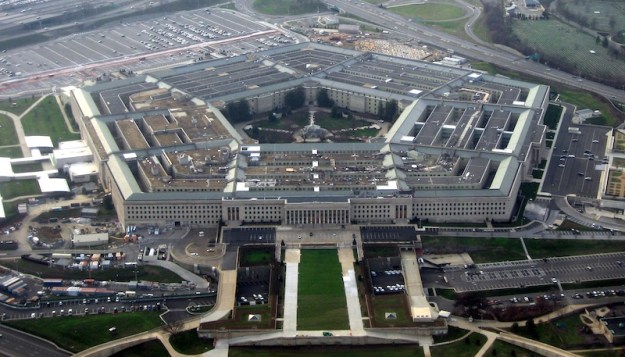
A new report from the Defense Science Board (PDF) recommends that the U.S. Department of Defense needs to have a much broader understanding of global climate change because—get this—it represents a fundamental threat to U.S. and international security. To help the DoD wrap its head around climate change, the report recommends the agency manage a widespread information system for climate change data that gathers intelligence and other climate data from a number of federal agencies and from extra-governmental sources. The idea is to enable the Department of Defense to forecast and, perhaps, mitigate the negative impacts of climate change—and the security threats it represents.
The DoD’s climate information system would bring together data from multiple federal sources, including NASA, the U.S. Geological Survey, the CIA, The National Oceanic and Atmospheric Administration, Defense, Energy, State, and Agriculture, and meld them together with data from private climate researchers and experts. One goal of the system would be to produce actionable climate forecasts. Basically, the DoD argues that current efforts to monitor climate change are decentralized, non-standardized, and make it very difficult to see a big picture—particularly when considered from the point of view of an agency tasked with protecting U.S. citizens and economic interests around the world.
How can climate change represent a security threat? The report emphasizes the strains and resources constraints climate change can place on food production, arable land, and water supplies—all of which can lead to political and even military conflict. The report notes that climate change factors could intensify resource problems and environmental issues that have been contributing to social conflict in Africa and other parts of the world for decades.
“Failure to anticipate and mitigate these changes increases the threat of more failed states with the instabilities and potential for conflict inherent in such failures,” wrote the board’s co-chairs.
In addition to creating a “robust” climate information system, the report recommends the DoD consider the full range of climate change issues and their potential impact on Defense operations and missions going forward. And, interestingly, the report recommends instituting “water security” as a central element of DOD strategy.
The report doesn’t flat-out blame human activity for climate change—which, despite broad scientific agreement, remains a political hot potato. Instead, the report’s executive summary merely states there is “compelling evidence that climate impacts are observable, measurable, real, and having near and long-term consequences.”
[Image: David Gleason, Wikimedia Commons]
Editors' Recommendations
- LA fire department to go electric with first battery-powered fire truck in U.S.
- Homeland Security wants to expand airport facial scans to U.S. citizens
- U.S. Interior Department grounds 800-strong drone fleet over security fears
- How drilling into million-year-old Antarctic ice could help fight climate change
- Why are people striking because of climate change? Here’s a summary


